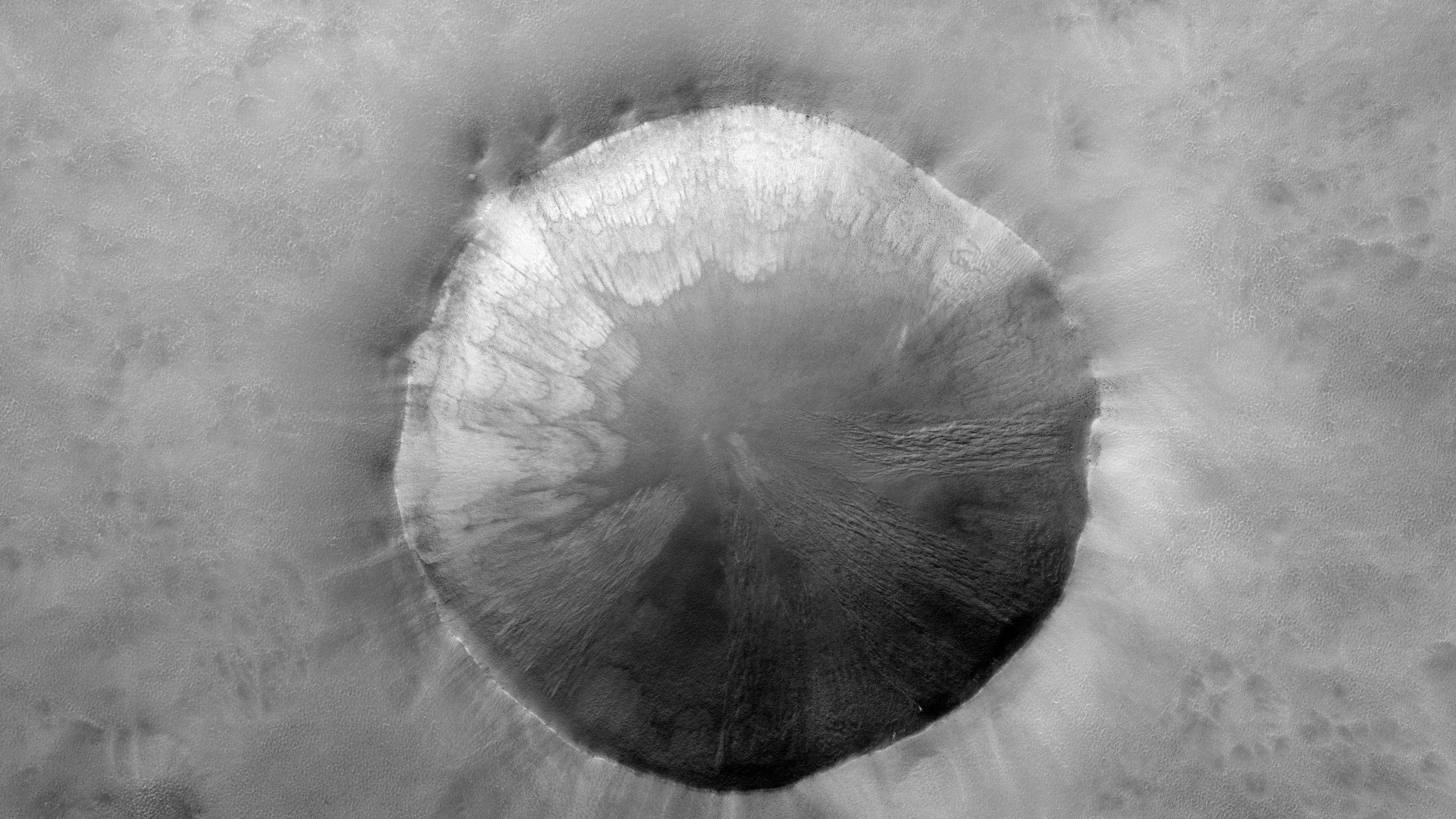High-resolution satellite images have revealed dripping paint-like patterns on Mars that match those found on Earth, according to a new study.
The familiar soil patterns suggest that Mars and Earth were shaped by similar forces. On Earth, the patterns form on the slopes of cold, mountainous regions where soils freeze and thaw throughout the year. If Mars once had the same icy, wet conditions, then these patterns could be a good place to explore the role that liquid water may have had in shaping the Red Planet and its potential to harbor signs of life.
“Understanding how these patterns form offers valuable insight into Mars’ climate history, especially the potential for past freezing and thawing cycles, though more work is needed to tell if these features formed recently or long ago,” study lead author JohnPaul Sleiman, a doctoral student in the department of Earth and environmental sciences at the University of Rochester in New York, said in a statement.
“Ultimately, this research could help us identify signs of past or present environments on other planets that may support or limit potential life,” Sleiman added.
The researchers published their findings online March 26 in the journal Icarus.
Related: NASA rover discovers out-of-place ‘Skull’ on Mars, and scientists are baffled
On Earth, soil patterns like this are known as solifluction lobes. They form when a sheet of frozen ground partially thaws and loosens, causing soil to creep downhill. The effect creates wave-like patterns on the side of hills in cold regions. Mars is further away from the sun than Earth, and typically much colder, but the Martian lobes only occur at high latitudes.
Some previous studies have suggested that Mars’ high-latitude regions may have experienced freeze-thaw conditions in the planet’s recent climate history, which would explain why it has similar lobes. However, there are many unanswered questions surrounding the Martian lobes, including why they appear to be significantly larger than those on Earth, according to the study.
By analyzing high-resolution satellite imagery of the Martian surface taken by the HiRISE camera aboard NASA’s Mars Reconnaissance Orbiter, the research team saw that the wave-like landforms followed the same basic geometric pattern as those in Earth’s Rocky Mountains, Arctic and other cold mountainous regions, according to the statement.
Study co-author Rachel Glade, an assistant professor in the department of Earth and environmental sciences at the University of Rochester, likened the landforms to patterns seen in fluids. These patterns “are large, slow-moving, granular examples of common patterns found in everyday fluids, like paint dripping down a wall,” Glade said in the statement.
The team also confirmed that the Martian lobes were larger than Earth’s — around 2.6 times taller on average. To explain this, they proposed that Mars has taller lobes because its gravity is weaker, which allows waves of accumulating sediment to grow taller before collapsing, according to the study.
The findings reinforce previous suspicions that Mars’ lobes are — or were — linked to ground ice, with their patterns resembling what would be expected from fluid-like instabilities. However, the researchers couldn’t be certain that liquid water was involved just from the satellite data. The authors suggested that future laboratory experiments could explore whether ice and liquid water are both required for the wave-like patterns to form.
Mars quiz: Is your knowledge of the Red Planet out of this world?
